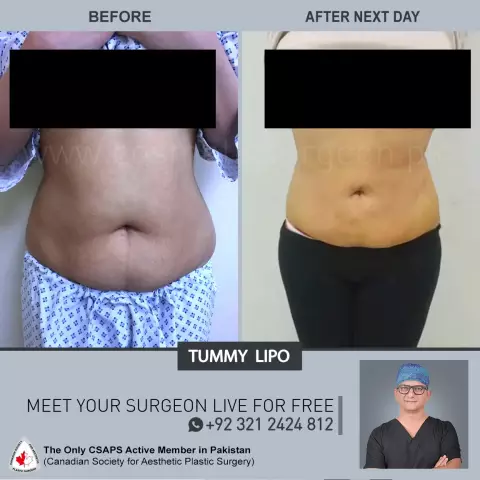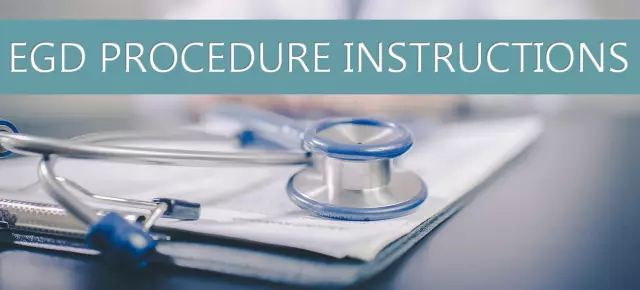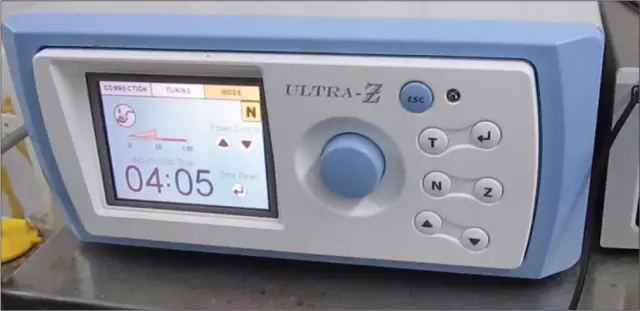- Author Rachel Wainwright [email protected].
- Public 2023-12-15 07:39.
- Last modified 2025-11-02 20:14.
Liposuction
Liposuction is a bariatric or cosmetic surgery

designed to surgically remove fat deposits from specific areas of the body. At the same time, liposuction does not treat obesity as such, since it does not affect the pathogenesis of this disease. Liposuction does not mean removing significant fat deposits. Getting rid of large amounts of fat (more than five liters) can cause a lot of blood loss, which makes the surgical procedure hazardous to health.
The main purpose of liposuction is to create a visual effect of a slender and beautiful figure by eliminating "fat traps" on the body - focal fat accumulations. In men, they are usually located in the chest, back and neck. Women, in most cases, tend to remove the "tummy", as well as to carry out liposuction of the thighs and buttocks.
The ideal candidate for liposuction is a person with slight excess weight, localized fat deposits, unresponsive to exercise and diet, with good health, firm and elastic skin. It should be noted that the results of liposuction in elderly people are not always the same as in patients with high skin contractility.
Types of liposuction
There are four main types of liposuction:
- Standard;
- Tumescent;
- Ultrasonic;
- Laser.
The essence of the standard method of liposuction of the abdomen or other parts of the body is to insert one end of the cannula into the subcutaneous space. The other end of the cannula is connected to a special vacuum device that creates negative pressure, which ensures the removal of the fatty layer.
The tumescent liposuction method was discovered in 1985 by the California dermatologist Jeffrey Klein. This technology allows you to remove more fat deposits compared to the standard technique. Jeffrey Klein used the infiltration of the operated area with a solution, the main components of which are lidocaine, adrenaline and an antibiotic. These ingredients shrink nerves and blood vessels, allowing you to safely remove fat and reduce the risk of infectious complications. To make liposuction by the tumescent method means to protect yourself from possible bleeding after surgery, damage to nerves, blood vessels and connective tissue. The use of thinner cannulas makes scars less visible.
Ultrasonic liposuction is characterized by the use of expensive equipment. The essence of the method lies in the use of ultrasound for the destruction of adipose tissue. During the procedure, a probe is inserted under the skin, which transmits ultrasonic waves that thin the fats, which can then be removed by vacuum suction. Ultrasonic liposuction is used when you need to pump out more than three liters of fat without blood loss and skin injury.
According to reviews, laser liposuction is ideal for those who are afraid of pain, hematomas and swelling after surgery. Body shaping by this method is the most gentle: laser liposuction coagulates ("seals") blood vessels, which ensures the absence of blood loss, and also provides the ability to perform liposuction of the abdomen, treat body areas that are not accessible for traditional surgery: forearms, face, knees.
Rehabilitation after liposuction
The main myth associated with liposuction is that the patient can leave the clinic immediately after surgery. This is far from the case. The first few days after liposuction, according to reviews of knowledgeable people, a person spends in a hospital, under the supervision of doctors. Surgeons not only monitor the patient's condition, but also control the process of his recovery after surgery.

The initial period of rehabilitation after liposuction, according to reviews, is characterized by the formation of seals, edema and bumpy skin in the aspiration zone. Some patients during this period complain of a slight increase in body temperature, muscle spasms and pain. To reduce their severity, the doctor can prescribe analgesic drugs to the patient, and in order to reduce the risks of infection, antibiotics.
Bruises and swelling finally disappear 2-3 weeks after the operation.
A prerequisite for rehabilitation after liposuction of the abdomen or thighs is the wearing of compression underwear, which helps to improve blood circulation and reduce tissue swelling. It also tightens relaxed skin. It is recommended to wear a compression garment for the first three weeks after surgery, 24 hours a day, taking off only in the shower, which can be taken on the fifth or sixth day after surgery.
The final stage of rehabilitation (the first month after the procedure) involves taking medications that reduce swelling and the use of physical therapy.
Possible complications after liposuction
Despite the fact that liposuction is intended to eliminate cosmetic imperfections, this procedure is classified as a surgical procedure, which means there are certain health risks.
All possible undesirable consequences in a patient who decided to do liposuction of the thighs or other problematic parts of the body are divided into local and general. Common complications include:
- Anemia. The disease may occur due to intraoperative blood loss associated with decreased sensitivity to adrenaline;
- Fat embolism and thromboembolism. Rarely enough complications that (especially the latter) require hospitalization of the patient;
Local complications are manifested by the following diseases:
- Infections. To prevent infectious complications before and after liposuction, the patient must undergo a thorough examination and take antibiotics;
- Skin necrosis. As a rule, it occurs when the procedure is performed aggressively, as well as when you do not want to wear compression underwear;
- Violation of sensitivity in the affected areas. Complication can occur due to trauma to the nerve fibers. Over time, the sensitivity of the skin is restored;
- Persistent edema, which can be observed after liposuction of the thighs on their inner surface, as well as in the area of the knee joint, legs and feet. The complication appears due to a violation of lymphatic drainage and, as a rule, disappears within 1-2 months after the operation.
For 10 days before and after liposuction, it is forbidden to smoke, take medications that affect blood clotting, hormonal and aspirin-containing drugs.
Found a mistake in the text? Select it and press Ctrl + Enter.






